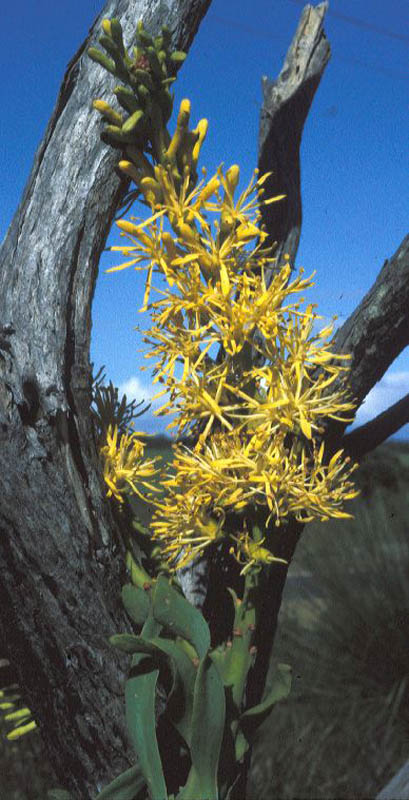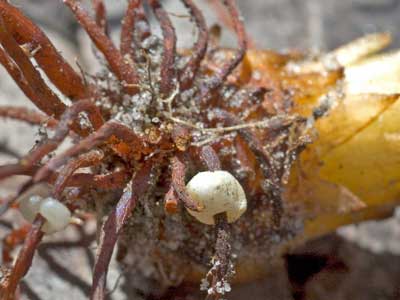Western Australian Christmas Tree
(Nuytsia floribunda)
What makes Nuytsia floribunda unique and adapted to live in Western Australia?
Like most of the organisms in southwestern Australia, Nuytsia Floribunda has uniquely adapted to survive in the specialized climate of Southwest Australia. As previously explained in Habitat and Geography, millions of years of isolation, along with poor soil conditions have allowed the Western Australian Christmas Tree to uniquely adapt to be one of three root parasite plants in its family. All of the other members of the Family Loranthaceae are aerial parasites or European mistletoes, which mean that their seeds attach and germinate on other tree branches above ground instead of attaching to the underground roots of an organism (Vidal-Russell, 2008).
Nuytsia floribunda adapted to parasitize roots because photosynthesis alone couldn’t provide enough water and minerals in the harsh dry climate for the plant to grow to its full potential. The small tree can never totally abandon its photosynthetic production like some aerial parasitic mistletoe, but it can heavily rely on its parasitism depending on how many haustoria have connected with hosts and the abundance of nutrients received from each host. This also determines the overall size and flowering time of the tree. The underground haustoria system can also give rise to leafy shoots that can become trees (Dawson, 2005).
Nuytsia floribunda has also evolved from other mistletoes in that it has dry winged fruit that is wind dispersed rather than a non-winged fruit enclosing the seeds like other mistletoes. The Western Australian Christmas tree has also adapted to become the largest of all mistletoes. (Dawson, 2005).
The picture above shows haustoria wrapped around Orobanche minor, a holoparasitic weed in Western Australia.
Continue on to find how these
adaptations provide Nutrients
Home

